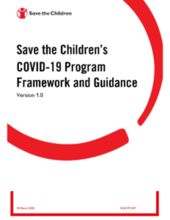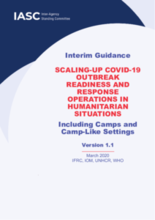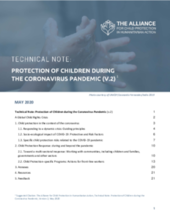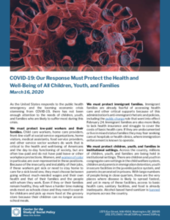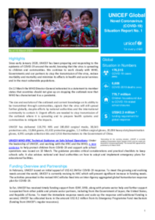This section highlights tools and resources for child protection in the COVID-19 pandemic.
Displaying 201 - 210 of 264
This resource from the Consortium for Street Children aims to answer the questions of those who work with street-connected children in light of the COVID-19 crisis.
The Alliance for Child Protection in Humanitarian Action hosted a webinar on 24 March 2020 to introduce the new Technical Note: Protection of Children during the COVID-19 Pandemic.
This framework represents Save the Children’s planning assumptions and priority areas for implementation over four phases of programming: Preparedness, Initial Response, Large-Scare Response, and Recovery.
This webinar reviewed the impacts of the COVID-19 crisis on women and girls and how to mitigate the risks of gender-based violence (GBV).
This article from the Children's Bureau of the U.S. Administration for Children and Families provides information and resources on the COVID-19 crisis for child welfare workers, children involved in the child welfare system, foster care providers, and more.
This interim guidance is issued to assist field staff to immediately respond to urgent needs of people in humanitarian situations, including internally displaced persons (IDPs), host communities, asylum seekers, refugees and returnees, and migrants.
Este documento de ONU Mujeres describe los impactos e implicaciones de COVID-19 para mujeres y niñas en América Latina y el Caribe, incluyendo el riesgo más alto de violencia.
The Alliance on Child Protection in Humanitarian Action has produced this Technical Note on the Protection of Children during the Coronavirus Pandemic, based on the Guidance Note on Protection of Children during Infectious Disease Outbreaks (Alliance, 2018), in an attempt to support frontline Child Protection workers, policy makers and donors in designing and implementing Child Protection interventions, including cross-sectoral collaboration.
This statement from the Center for the Study of Social Policy emphasizes the need to respond to the needs of children, youth, and families who are likely to suffer most during the COVID-19 crisis, including children, youth, and families in institutional settings and families involved in the child welfare system.
This situation report from UNICEF presents an overview of humanitarian needs during the COVID-19 pandemic and a summary of UNICEF's global preparedness and response actions.

